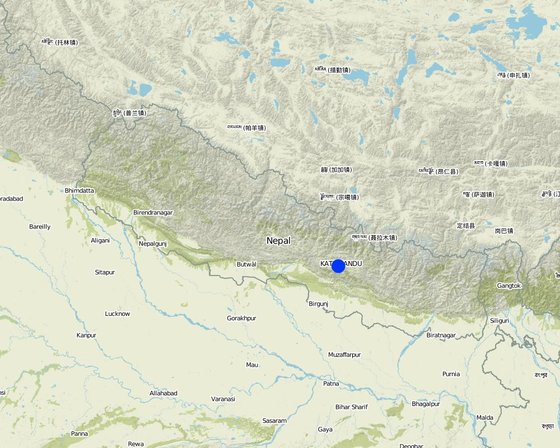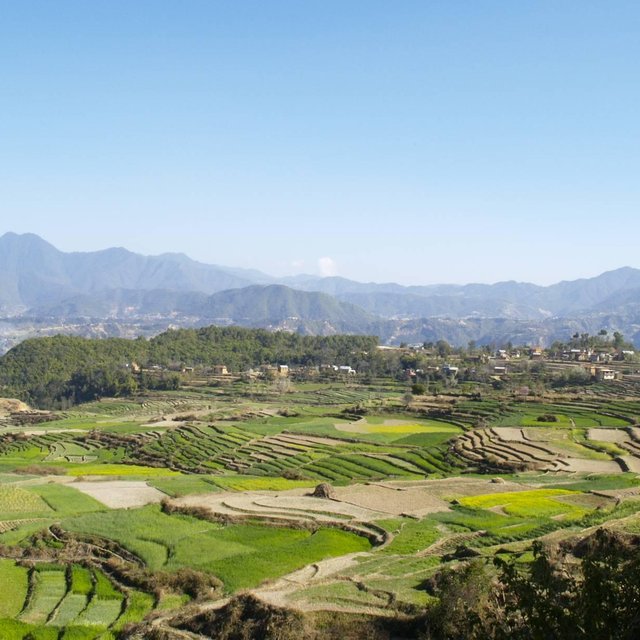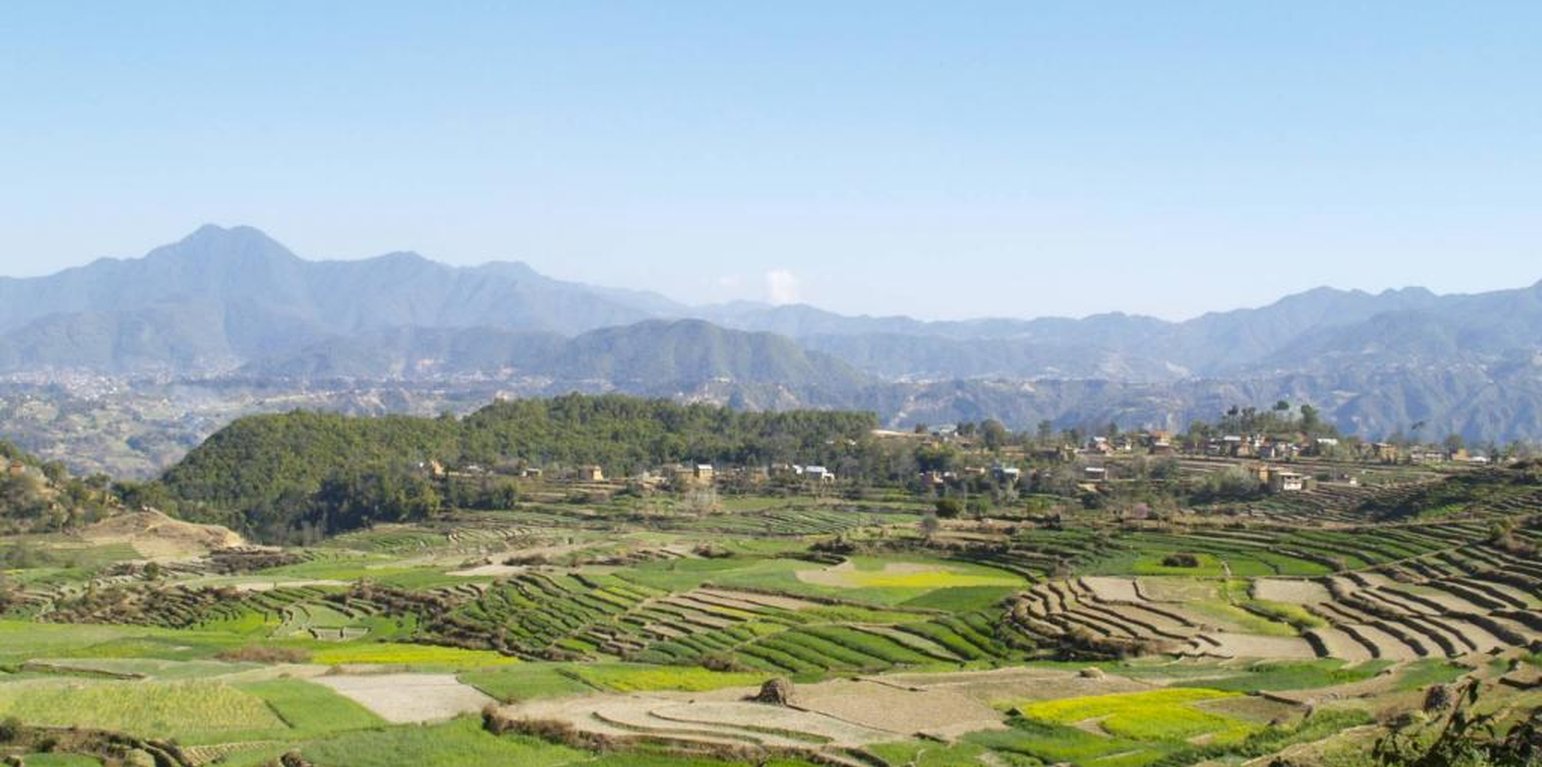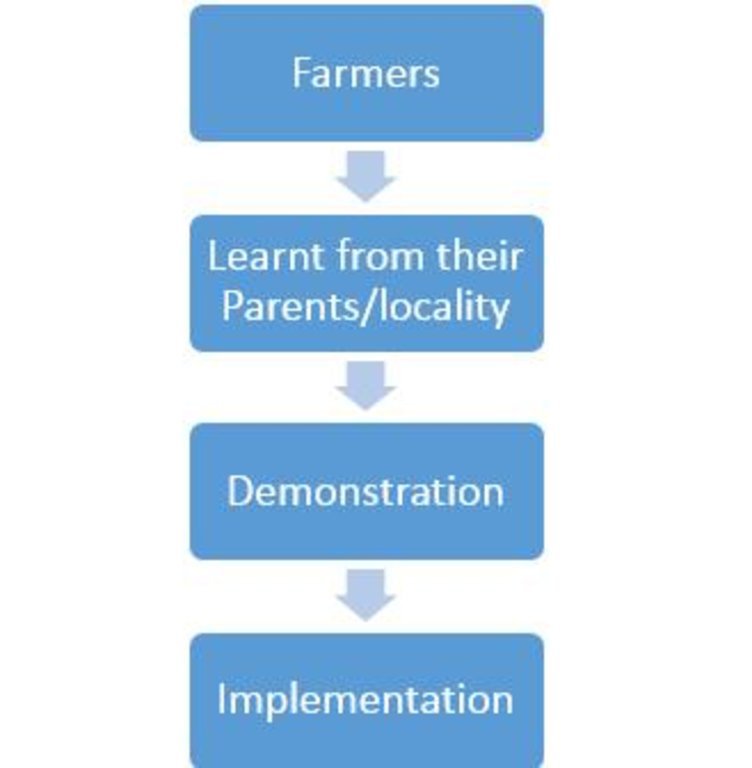Typical newar style rice farming for productivity and soil conservation (by puddling).
(Nepal)
nepali language :- Dhan ropai
Descrição
Typical Newari style rice farming ages long ,traditional and sustainable way of agriculture that is more focused on increasing rice production and maintaining field's productivity.
Aims / objectives: The main objective of the approach is to study how this indigenous method of rice cultivation is helping to increase rice yield and prevent the land from going barren. It is also centered to know about the involvement of various organizations like local government and INGOs in the process.
Methods: We followed the listed steps.
i)Site Visit
ii)interview with the local farmers
iii)question the labors
iv)literature review through books and intenet
Stages of implementation: i)land preparation
ii)crop preparation
iii)crop transplantation
iv)harvest
Role of stakeholders: Government:-More accessible and affordable and subsidies in budget
More initiative for the farmers in term of knowledge ,training and other technologies
Local administration :-Easy supply of machines,tools chemical fertilizer should be ensured
Other important information: Since it is an indigenous method for rice production,and were in practice for hundred of years, the recent racial mixture and introduction of newer method from terai has resulted into vast change in the methods and methodology of this newari method of typical rice production.
Localização

Localização: kathmandu, Nepal, Nepal
Geo-referência de locais selecionados
Data de início: n.a.
Ano de término: n.a.
Tipo de abordagem
-
Tradicional/Indígena
-
Iniciativa/inovação local recente
-
Baseado em projeto/programa

Rice farm as seen from near Salyansthan near Kirtipur.
Objetivos de aproximação e ambiente propício
Principais metas / objetivos da abordagem
The Approach focused mainly on other activities than SLM (Productivity of rice crops)
To study the typical approach of rice farming and learn about the problems it is currently suffering.
The SLM Approach addressed the following problems: Low agriculture production due to change in monsoon pattern,decremented soil fertility due to excavation for brick industries and lack of modern techniques and methods to cope the problems.
Condições que permitem a implementação da Tecnologia(s) aplicada(s) sob a Abordagem
Condições que dificultam a implementação da Tecnologia(s) aplicada(s) sob a Abordagem
-
Normas e valores sociais/culturais/religiosos: Due to massive introduction of new methods of farming, the typical newari method has been altered. This has resulted into loss of expertise and indigenous knowledge that may cause some serious irreversible loss in Nepalese talenet.
Treatment through the SLM Approach: Government or other institutions should document the newari method of agriculture for future application.
-
Disponibilidade/acesso a recursos e serviços financeiros: Farmers have difficulties to arrange fund in off season. Also sometime they need to burrow money at heavy interest.
Treatment through the SLM Approach: Government can provide interest free loan to farmers.
-
Quadro jurídico (posse de terra, direitos de uso da terra e da água): Conflicts among locals on resources like water due to extremely limited supply.
Treatment through the SLM Approach: mutual cooperation and advance level of engineering to design water supply for irrigation in the field
The existing land ownership, land use rights / water rights hindered a little the approach implementation Community ownership meant no hindrance for development.
-
Conhecimento sobre GST, acesso a suporte técnico: some efficient and new technology (genetically modified crop) and lack of advance equipment for agriculture
Treatment through the SLM Approach: Administration and local authority should address this and inform farmers about the agricultural advancement through Agricultural Ministry.
-
Carga de trabalho, disponibilidade de força de trabalho: Since agriculture is tedious job, farmers are always lacking manpower to help themselves.
Sometimes they are forced to hire expensive workers.
Treatment through the SLM Approach: Government and other institutions should help farmer to get technologies that can help them to decrease their work load.
-
Outro: Other constraints may include lack of younger generations interest in farming.
Treatment through the SLM Approach: Better education in schools and establishment of agricultural universities may increase their interest.
Participação e papel das partes interessadas envolvidas
Partes interessadas envolvidas na abordagem e seus papéis
| Que partes interessadas/órgãos de implementação estavam envolvidos na abordagem? |
Especifique as partes interessadas |
Descreva o papel das partes interessadas |
| Usuários de terra/comunidades locais |
Land owners in Kirtipur, Kathmandu |
Men are adopting other occupations like moving to middle east or other private job because of better and continuous income and profit. While younger generations are moving abroad for the similar reason. So, the female are mostly limited and focused in the cultivation of the crop. Both male and female is 20s and above 50s who are mostly economically disadvantaged. |
| Especialistas em GST/ consultor agrícola |
Agrospecialist working on Ministry of Agriculture |
|
| Professores/alunos/estudantes |
Developing importance of non toixic food production |
|
| Organização não governamental |
environmentalist belong to NGOs ,FAO |
|
| Governo local |
Village Developmental Commitee |
|
| Governo nacional (planejadores, responsáveis pelas decisões) |
Agrospecialist from Ministry of Agriculture and Forest. |
|
| The ancient newari tribe. |
|
|
Envolvimento do usuários de terra/comunidades locais nas diferentes fases da abordagem
Nenhum
Passivo
Apoio externo
Participativo
Automobilização
Iniciação/motivação
Specially promoted by organic business enterprise for exporting them as a better product.
Planejamento
Everything is planned by the local community or the land owner.
Implementação
This method is still used by newari community of Nepal.
Monitoramento/avaliação
Negative impact from the fertilizer ,the need of organic food production is taking good speed for the better world.for this FAO and other local people are showing their activeness .
Research
For this approach very few research been done and need immediate documentation.
Fluxograma
The flowchart shows the hierarchy of this approach. This methodology of rice production was handed over generation over generation. the newer generation learn from the older people from their community.
Tomada de decisão sobre a seleção da Tecnologia GST
As decisões foram tomadas por
-
Somente usuários da terra (iniciativa própria)
-
Principalmente usuários da terra, apoiados por especialistas em GST
-
todos os atores relevantes, como parte de uma abordagem participativa
-
Principalmente especialistas em GST, após consulta com usuários da terra
-
Somente especialistas em GST
-
Políticos/líderes
As decisões foram tomadas com base em
-
Avaliação de conhecimento bem documentado de GST (tomada de decisão baseada em evidências)
-
Resultados de pesquisa
-
Experiência pessoal e opiniões (não documentado)
Suporte técnico, reforço das capacidades e gestão do conhecimento
As seguintes atividades ou serviços têm sido parte da abordagem
-
Reforço das capacidades/ formação
-
Serviço de consultoria
-
Fortalecimento da instituição (desenvolvimento organizacional)
-
Monitoramento e avaliação
-
Pesquisa
Fortalecimento institucional
As instituições foram fortalecidas / estabelecidas
-
Não
-
Sim, pouco
-
Sim, moderadamente
-
Sim, significativamente
Descreva instituição, papéis e responsabilidades, membros, etc.
Tipo de apoio
-
Financeiro
-
Reforço das capacidades/ formação
-
Equipamento
Mais detalhes
Local governing bodies along with some INGOs and NGOs are always ready to help the farmers. Their helps include hybrid seed and occasional seeds.
Monitoramento e avaliação
socio-cultural aspects were monitored by land users through observations
economic / production aspects were monitored by land users through observations
Pesquisa
As pesquisas trataram dos seguintes tópicos
-
Sociologia
-
Economia/Marketing
-
Ecologia
-
Tecnologia
Small research was done by conducting interview with the land owners and going through literatures of the related topics.
Research was carried out on-farm
Financiamento e apoio material externo
Orçamento anual em USD para o componente GST
-
< 2.000
-
2.000-10.000
-
10.000-100.000
-
100.000-1.000.000
-
> 1.000.000
Precise annual budget: n.a.
Approach costs were met by the following donors: local government (district, county, municipality, village etc) (Support from Nepalese government like seeds,fertilizer etc.): 4.0%; local community / land user(s) (Small support from INGOs like FAO,World Bank.): 95.0%; other: 1.0%
Os seguintes serviços ou incentivos foram fornecidos aos usuários de terras
-
Apoio financeiro/material concedido aos usuários da terra
-
Subsídios para insumos específicos
-
Crédito
-
Outros incentivos ou instrumentos
Apoio financeiro/material concedido aos usuários da terra
Parcialmente financiado
Totalmente financiado
Equipamento: Maquinário: Ferramentas
A mão-de-obra dos usuários da terra foi
-
Voluntário
-
Comida por trabalho
-
Pago em dinheiro
-
Recompensado com outras formas de apoio material
Análise de impactos e declarações finais
Impactos da abordagem
Não
Sim, pouco
Sim, moderadamente
Sim, significativamente
A abordagem auxiliou os usuários da terra a implementar e manter as tecnologias de GST?
This method of rice cultivation is in practice for hundred of years and its success clearly shows that it is effective in soil conservation.
A abordagem concedeu autonomia aos grupos social e economicamente desfavorecidos?
There is no much improvement,though they some job opportunity to improve their life style.
A abordagem melhorou as questões de posse de terra/diretos do usuário que inibiam a implementação das tecnologias de GST?
There are no hindrance.
The problem is likely to be overcome in the near future. The approach creates a effective framework that can be used in future.
Did other land users / projects adopt the Approach?
Adopted by some native people of neighboring districts.
Principal motivação dos usuários da terra para implementar a GST
-
Produção aumentada
-
Lucro (lucrabilidade) aumentado, melhora da relação custo-benefício
-
Degradação do solo reduzida
-
Riscos de desastre reduzido
-
Carga de trabalho reduzida
-
Pagamentos/subsídios
-
normas e regulamentos (multas)/aplicação
-
Prestígio, pressão social/coesão social
-
Afiliação a movimento/projeto/grupo/rede
-
Consciência ambiental
-
Costumes e crenças, moral
-
melhoria dos conhecimentos e aptidões de GST
-
Melhoria estética
-
Atenuação de conflitos
-
well-being and livelihoods improvement
Atividades de sustentabilidade de abordagem
Os usuários da terra podem sustentar o que foi implementado através da Abordagem (sem apoio externo)?
Yes, we believe that the farmers can keep continuing the approach activities without support as it is very easy and indigenous method for farming.
Conclusões e experiências adquiridas
Pontos fortes: visão do usuário de terra
-
1.It is easy method to apply and it increase the soil fertility rate .
2. good quality of rice by the use of puddling process and organic fertilizer. (How to sustain/ enhance this strength: 1. Repair the soil infertility.
)
Pontos fortes: a visão do/a compilador/a ou de outra pessoa capacitada
-
1. It is traditional ,unique and indigenous technique.
2.Its been good at yielding more productivity.
3. It is helping soil from getting barren. (How to sustain/ enhance this strength: 1.More facilities,subsidies,loan,etc for farmers.
2.Introduction of innovative and new technologies.
3.Teaching farmers the new and advanced knowledge.)
Pontos fracos/desvantagens/riscos: visão do usuário de terracomo superar
-
1.Less effective due to lack of equipment and alternative backup plan.
1. More research ,advise center for agriculture development should be provide by by the top level.
Pontos fracos/desvantagens/riscos: a visão do/a compilador/a ou de outra pessoa capacitadacomo superar
-
1. It cannot be the ultimate way of addressing of per capita income.
2. Many people are showing less interest.
3.It results in relatively less earning and thus very less respected.
1.Change in attitude farming among people.
2.More fund for the research should be allocated.
3. More colleges specialized for agriculture should be established.
Referências
Data da documentação: 17 de Janeiro de 2014
Última atualização: 8 de Julho de 2017
Pessoas capacitadas
-
Sabita Aryal (sabita@ku.edu.np) - Especialista em GST
-
Shyam Sharma - Especialista em GST
-
Bibek Shrestha - Especialista em GST
-
Shanta Maharjan - Especialista em GST
-
Buddhi Maharjan - Especialista em GST
Descrição completa no banco de dados do WOCAT
A documentação foi facilitada por
Instituição
- Kathmandu University (KU) - Nepal
Projeto
Referências-chave
-
wikipedia/internet and article base on organic food(rice farming):






